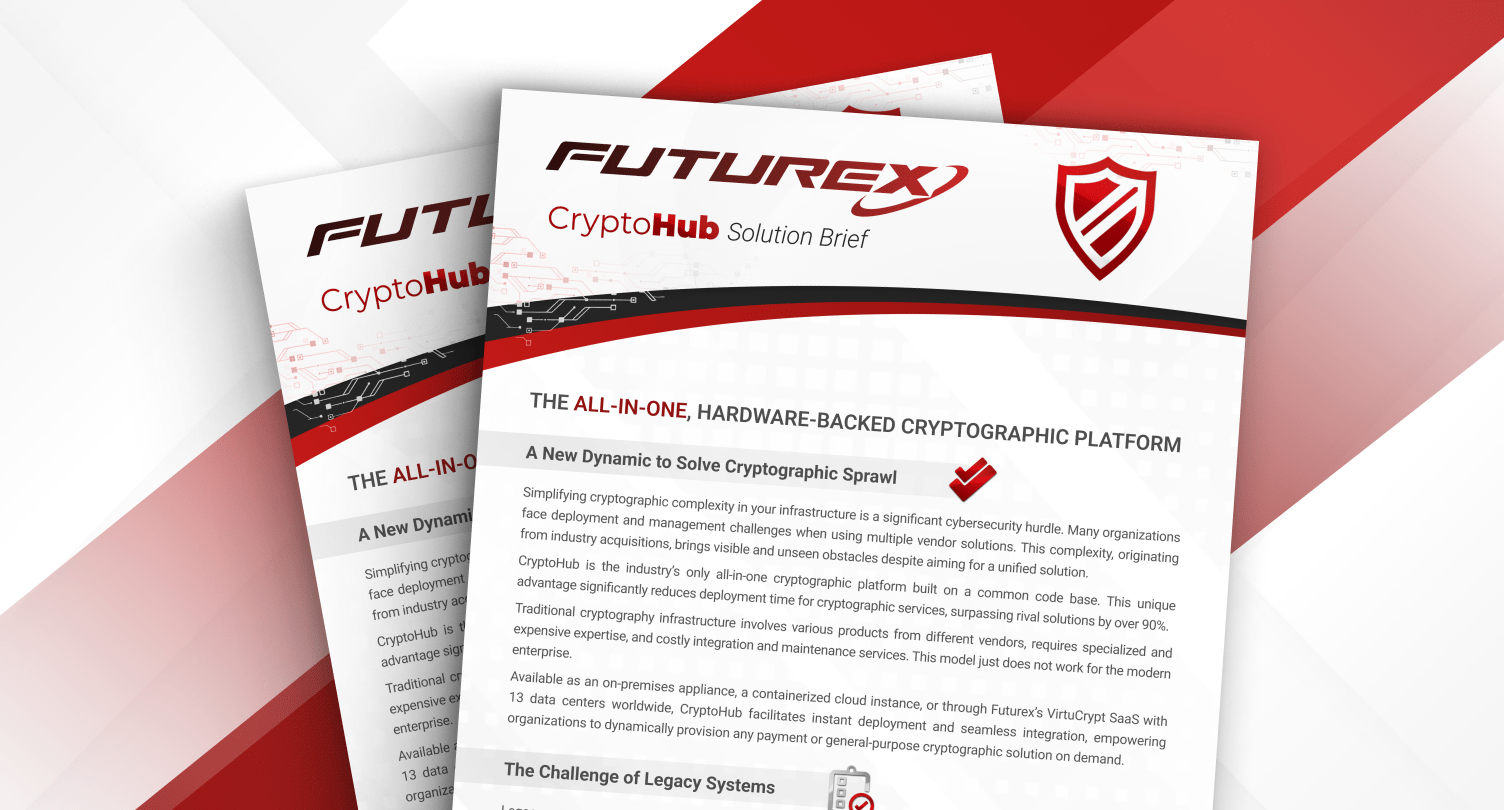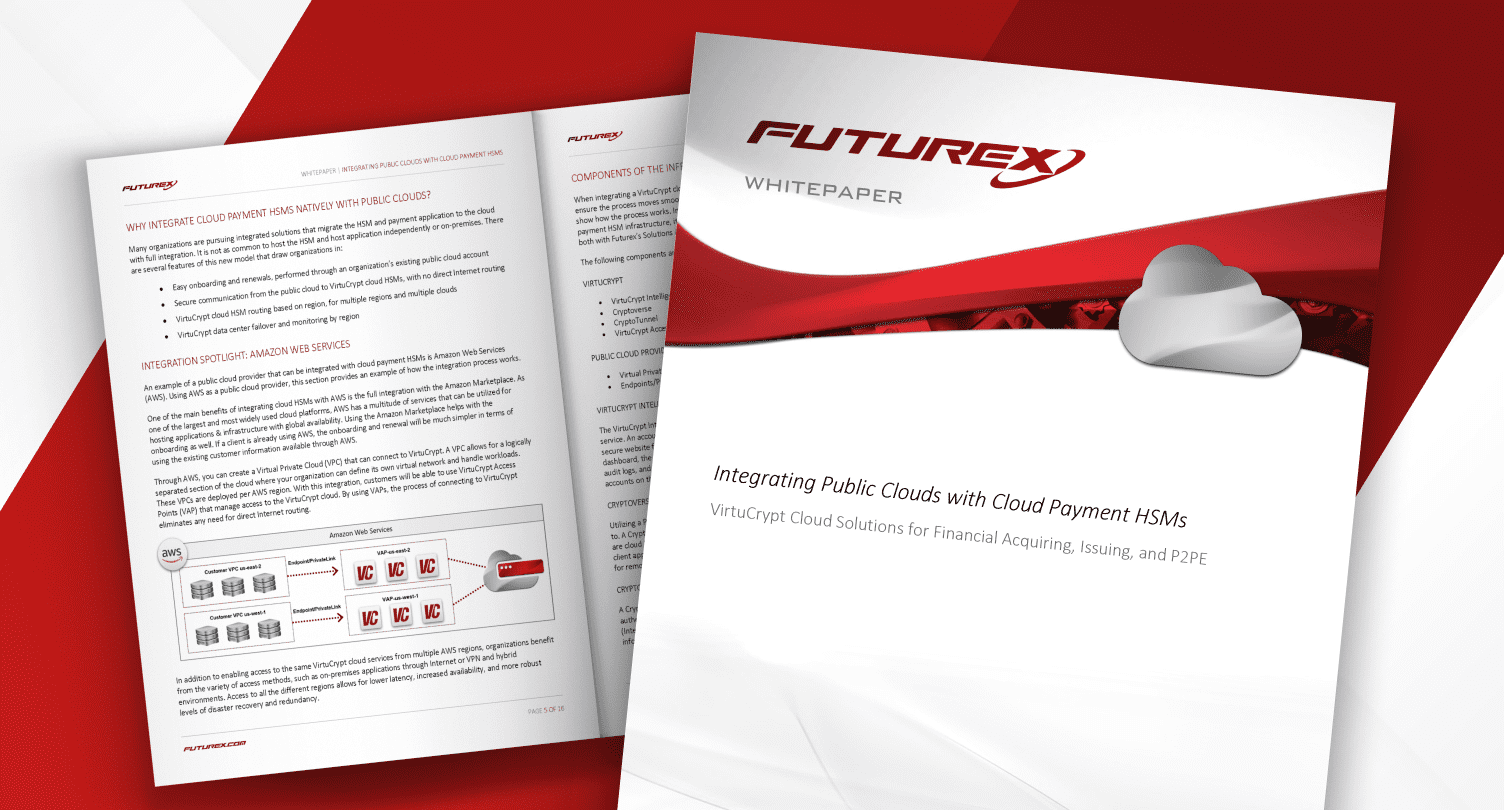Enterprise-Level Integrations
Explore 150+ platform integrations

Build Your Security Ecosystem with Futurex
With over 150 applications and integrations with leading technology providers, our integrated solutions can transform your data security ecosystem.
Our CryptoHub Hardware Security Module (HSM) capabilities support IoT, key injection, database and application encryption, and CI/CD security. These capabilities are adaptable across cloud, on-premises, and hybrid environments, providing optimal protection.
Futurex provides innovative, scalable, reliable, and compliant solutions tailored to your needs. Our extensive integrations ensure your organization remains secure, resilient, and prepared for evolving digital threats.
In today's interconnected world, Futurex offers cutting-edge security that meets today's standards and anticipates tomorrow's challenges.
Integrate Seamlessly with Futurex
Comprehensive Integration
Gain access to an incredible array of 150+ applications and integrations from leading tech providers, ensuring seamless compatibility and enhanced functionality across diverse security landscapes. Experience comprehensive protection and flexibility at its best!
Versatile Security Solutions
Explore our comprehensive range of solutions, from IoT to key injection and database encryption! Safeguard your infrastructure and application ecosystem at every level with our tailored security offerings.
Seamless Application Support
Seamlessly integrate security into your application and database infrastructure, enhancing efficiency and reducing vulnerabilities in your ecosystem.
Adaptable HSM Capabilities
Our versatile HSM capabilities seamlessly adapt to cloud, on-premises, and hybrid environments. They deliver dependable security solutions for your data and applications, regardless of your infrastructure setup, ensuring constant top-notch protection.
Industry-Leading Protection
Take advantage of our top-of-the-line security measures, such as kernel-level database encryption and application security, backed by our integrated solutions and HSM capabilities. We dedicate ourselves to protecting your sensitive data and applications from constantly changing cyber threats.

3rd Party Integrations for Vectera Plus
Apache: HTTP Server and Tomcat
Integrate with the Apache HTTP Server and Apache Tomcat web server software.
.png?width=85&height=101&name=vectera%20plus_axway_Q%20(1).png)
Axway
Validate digital certificates stored on CAC cards, PIV cards, and software.
HashiCorp Vault: Seal Wrap & Entropy Augmentation and Managed Keys
Manage secure data vaults for certificates, tokens, credentials, and managed encryption keys.
BIND 9
Integrate with the flexible, open-source BIND 9 DNS software suite.
CyberArk Vault
Protect and manage privileged access across your organization's on-premises and cloud infrastructure.
EJBCA
EJBCA's platform-independent flexibility matches the many vendor-agnostic APIs.
ISC CertAgent
Integrate with ISC CertAgent CA to issue X.509 certificates.
Java Jarsigner
Establish digital signing operations for Java JAR files to authenticate them.
Microsoft SignTool
Digitally sign and verify signatures of files with Microsoft SignTool support.
Microsoft Windows Certificate Store
Store certificates on local computers using the Microsoft Windows Certificate Store.
OpenSSL Engine
Easily integrate with OpenSSL to generate private keys and create CSRs.
Protegrity
Connect encryption functionality to Protegrity's data protection capabilities.
Microsoft AD CS
Securely support Microsoft AD CS in creating and managing client PKI certificates.
Oracle Database TDE
Establish a Root-of-Trust (ROT) for Oracle databases and protect wallet passwords.
Microsoft SQL Server
Effectively manage the key lifecycle, securely generate and issue database encryption keys.
Versasec vSEC:CMS
Create and manage user authentication credentials throughout your organization.
Java KeyTool
Secure keys with Java KeyTool for various general-purpose applications.
Venafi Trust Protection Platform (TPP)
Integrate for practical key and certificate lifecycle management.
Red Hat Certificate System
Manage user identities and secure private communications.
Check Point Security Gateway
Integrate with an added extra layer of security to your network.
Featured Resources
/ds_thumbnail_cryptohub-min.png)

"...we are working with AWS and Futurex. They help us provide the innovative, scalable, reliable, and compliant solutions our customers are seeking day after day.”
- Thiago Lopes, Information Security Manager
Pismo
Enterprise Data Encryption Solutions
Futurex provides HSMs and key management servers that handle encryption, bring-your-own-key (BYOK). Futurex helps enterprise organizations deploy a modern cloud data security environment that complies with the latest standards and regulations.









